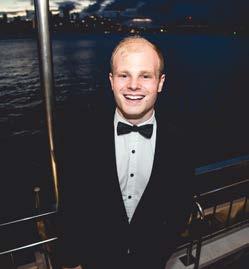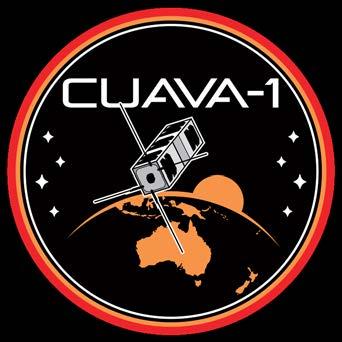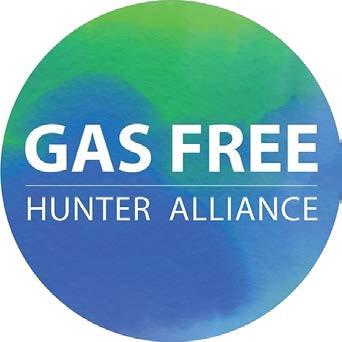
18 minute read
Jagose appointed Deputy Vice- Chancellor
CLAIRE OLLIVAIN
Advertisement
Staff at universities across New South Wales are campaigning for access to paid vaccination leave as the state records daily COVID-19 case numbers in the 800s and the government ramps up its vaccination rollout.
So far, the University of Sydney has not responded to the National Tertiary Education Union (NTEU)’s requests to provide up to two days paid authorised absence for each vaccination.
USyd is currently lagging behind five other NSW universities which
have all agreed to paid leave for staff, including casuals, to get vaccinated.
The University currently provides 10 days of COVID-19 special leave for staff including casuals who are required to self-isolate, are sick with COVID, or unwell as a result of a vaccination.
Even so, this special leave can’t be used by staff to get vaccinated, creating a barrier for many staff who cannot book an appointment outside of a time where they would lose pay.
A University spokesperson said that they were offering some flexibility with work hours and that “staff may also take personal leave if needed to attend a vaccination appointment.”
However, NTEU NSW Secretary Damien Cahill told Honi that continuing staff who have access to sick leave shouldn’t have to use it to get vaccinated, and that this excludes casuals who don’t have access to sick leave whatsoever.
“While we welcome news from the
Vice-Chancellor about the 10 days of special leave, that needs to be extended to cover vaccination leave for all staff,” he said.
A spokesperson for the USyd Casuals Network said it was “an excellent step forward” that casual staff are being included in the NTEU’s campaign for paid vaccination leave.
“Paid vaccination leave is vital to ensure there are as minimal barriers as possible for staff at the University of Sydney being vaccinated, especially the 50% of staff who are casual.”
“As with all policy, the most marginalised people should be at the forefront of any considerations about public health. For universities, that means making sure policies such as paid leave work for all casual staff rather than letting us consistently fall through the gaps.”
NTEU NSW is circulating a petition for paid vaccination leave which has over 2,300 signatures at the time of writing. The petition emphasises that overcoming difficulties that face workers is a “key factor” in improving low vaccination rates. “Things have moved very quickly in the last week,” Dr Cahill said of the five universities now offering paid vaccination leave. “I hope that University of Sydney management goes with the tide of opinion but also shows some leadership.”
“This is something that’s going to be essential in the future, we want all students and all staff to be vaccinated. Obviously, it’s going to be essential for opening up to international students that people are vaccinated. So this is a very small step that the University could take to encourage staff to get vaccinated.”
SOURCE: NTEU NSW
MAX SHANAHAN
Professor Annamarie Jagose, the current Dean of the Faculty of Arts and Social Sciences, will be promoted to Deputy Vice-Chancellor and Provost in October.
Professor Jagose has been at the forefront of FASS plans to dissolve the School of Language, Arts and Media and merge departments, which will see a number of job losses.
She was recently widely ridiculed after comparing herself to Brittany Higgins and questioning the “hermeneutically suspicious position” of protestors who made “insinuatingly gendered recourse to my first name only” in protest chants against the cuts to SLAM.
Jagose’s background is in Gender Studies. She is the author of Orgasmology, a book about “the material and psychic practices through which erotic gratification is sought.” She is also the author of a novel about the relationship between a gay colonial sailor and a clergyman. Before moving to the University in 2011 to become Head of SLAM — the School which she is now trying to dissolve — Jagose was a Professor and Department Head at the University of Auckland.
Vice-Chancellor Mark Scott said that “Annamarie [Jagose] brings a strong combination of leadership and management experience at the University, along with experience of leading change and shaping culture within complex academic environments.”
Jagose said “I look forward to partnering with Mark and senior colleagues to lead the University in its next transformational stage.”
The University will appoint an interim FASS Dean before beginning an “international search” for a permanent replacement.
Unprecedented 5-way race for Honi, head-to-head battle for SRC Presidency
SHANIA O’BRIEN & SAMUEL GARRETT
The SRC elections this year will see a two-way Presidential contest and an unprecedented five-way race for the Honi Soit editorship, after nominations for the 2021 Annual Elections of the University of Sydney Students’ Representative Council closed on Wednesday at 5pm.
Matthew Carter (Student Unity) and Lauren Lancaster (Grassroots) will go head-to-head in a two-way battle for President. 29 other presidential hopefuls did not provide the minimum 10 supporting nominators to successfully register for the election.
Honi Soit will see a five-way race between three tickets: DRIP for Honi, CAKE for Honi, Legacy for Honi, and two lone candidates. This is the most candidates in an Honi election in at least the last decade, surpassing 2014’s four-cornered contest. 375 candidates have registered for Council, with just 39 seats up for grabs — four more than last year. 61 candidates across nine tickets will run for the National Union of Students (NUS).
The nominations suggest a return to form for student elections, with both President and Honi candidates being elected unopposed last year, though as nominations remain provisional, the field may change before the election on 21-23 September.

LANCASTER (GRASSROOTS) CARTER (STUDENT UNITY)

Disclaimer: Editor Vivienne Guo is not involved in any of the 2021 coverage of Honi Soit, NUS, and SRC elections.
Uni Adelaide reports $40m surplus amid ongoing cuts
VIVIENNE GUO
Amidst ongoing austerity proposals and staff redundancies, the University of Adelaide has reported a $40.8m statutory net operating surplus in 2020, in their annual report released this week.
In 2019, Uni Adelaide reported a $42.9m net operating surplus, only marginally larger than their 2020 surplus. Uni Adelaide’s 2020 surplus included $10m in donations and requests, as well as $20m of research funding.
According to Campus Morning Mail, Uni Adelaide recorded a relatively steady financial performance for 2020 when compared to 2019. This financial performance was due to cost-cutting measures such as staff purchased leave, the voluntary separation of 157 staff, and a pause on infrastructure projects, hiring of staff and other expenditures. The savings from these measures totalled around $90m.
The redundancies at Uni Adelaide despite its strong financial position reflects rising concerns of the neoliberal business model of universities, and the priorities of university management, which do not appear to lie with the university community but rather with profit.
In July, Adelaide University ViceChancellor Peter Høj proposed a range of cost-cutting measures, which included the forced redundancies of upwards of 130 FTE professional staff. These forced redundancies are in addition to 157 voluntary redundancies accepted by Uni Adelaide in 2020.
Notably, Uni Adelaide’s expenditure on staff redundancies more than tripled compared to 2019; staff redundancies cost the university $23m, compared to $7m in 2019.
In universities across Australia, the logic of austerity and COVID crisis measures has been used by management to justify cutting staff jobs and even entire departments. At USyd, an operating surplus of $106.6m was reported in 2020, a profit which came off the back off staff redundancies and other cost-cutting measures. Cuts to departments, such as Theatre and Performance Studies and Studies of Religion, remain on the table.
Now at Uni Adelaide, Vice Chancellor Høj has proposed new cost-cutting measures, including the merging of five faculties into three, further reduction of 130 staff positions, and a review of the minimum allowable enrolment sizes for courses. Casualisation at Uni Adelaide is one of the highest in Australia, marked at 52.52% in 2019.
Australian CUAVA-1 satellite launched aboard Space-X rocket in Florida
VIVIENNE GUO
An Australian satellite was launched aboard a Space-X Falcon 9 rocket from Cape Canaveral, Florida on Saturday.
The satellite, dubbed CUAVA-1, is bound for deployment from the International Space Station, carrying four experimental payloads in the hopes of giving scientists and researchers fresh insights from near-Earth orbit.
CUAVA-1 is a cubesat: a low-cost and simple way to access near-Earth orbit for scientific and commercial purposes. Cubesats are built from small boxes (only 10cm cubed, weighing no more than 1.3 kgs each!) that are chock-full of cutting edge technology. In the case of CUAVA-1, picture three of these small cubes joined together, making a rectangular box around 30 cm long and weighing around 3 kgs in mass.
The launch of the satellite, which for the next 12 months will live 400 kilometres above Earth, checks a milestone in the lead project of the Australian Research Council Training Centre for CubeSats, Uncrewed Aerial Vehicles and their Applications (CUAVA).
According to a press release received by Honi, the CUAVA-1 mission aims to: observe the Earth with novel imaging technology; investigate the Earth’s plasma environment and space weather with the satellite’s radiation detectors; and test equipment that will go on to be used in future satellites that will search for signs of life on planets around Alpha Centauri, our nearest star system. The bright dreams attached to this tiny cubesat are fixed on future horizons of space exploration.
Based at the University of Sydney, CUAVA involves researchers and scientists from universities around the world, including the University of NSW, Macquarie University, multiple Australian commercial and government partners and the Rochester Institute of Technology in the United States.
The CUAVA project is partially funded by the NSW Government under the Australian Research Council’s Industrial Transformation Training Centres scheme. CUAVA’s government connections extend to its partnerships with the Australian Bureau of Meteorology and the Department of Defence. The responsibilities and parameters of CUAVA’s partnership with the Department of Defence is as yet unclear.
CUAVA is also commercially partnered with Air@Wave Communications, ArborCarbon, HyVista and Saber Astronautics.
“This mission shows that Australian universities are at the forefront of our emerging national space industry,” said Professor Iver Cairns, of USyd’s own School of Physics, and Director of Cuava. “Our CUAVA Training Centre is leading in the development of near-Earth space technology and is a critical link in training the next generation of space engineers and scientists.”
In the largely uncharted cosmos, the CUAVA-1 launch sees the Australian space industry take a step towards building international space cooperation.

Students and staff band together as UTS employment negotiations begin
BONNIE HUANG & ARIANA HAGHIGHI
Amidst incessant funding cuts and job losses, the UTS Education Action Group (EAG) and the NTEU have banded together in solidarity to push back against management proposals for UTS’ Enterprise Bargaining Agreement (EBA), which will cover rates of pay and employment conditions for the next three years.
Negotiations began on July 20 and fortnightly bargaining meetings have been scheduled to continue indefinitely until an agreement is reached.
The EBA proposals made by UTS management have been criticised for undermining the rights of staff and the quality of student learning at the university. These include removing the 7am-7pm limit on working hours, reducing notice periods for termination, lowering redundancy pay and forcing staff to take leave once they have accumulated 20 days of leave. Management have also proposed to remove staff entitlement safeguards and job security protections like redundancy and unsatisfactory performance reviews, which provide workplace fairness.
These measures disproportionately affect women, who make up 45% of academic staff, as management proposes to tighten the minimum requirements for parental leave from 40 to 52 weeks of service, locking out many staff members from seeking leave.
In addition to cutting jobs in the Science and Education departments, management wishes to modify job descriptions which are associated with a fixed pay rate, ushering in further opportunities to slim down staff wages.
UTS NTEU Branch President Sarah Attfield told Honi that “the University has produced a draft agreement that removes some of the current conditions which do not address job security, which is central to our log of claims”.
Management’s proposals continue UTS’ track record of austerity measures. In response to these mounting pressures, the UTS EAG ran a ‘Fighting the Cuts’ forum on August 26, attended by over 50 students and staff.
Women’s Collective convenor Cat Doherty spoke about how many of her courses were shifted to online without any in-person options, planned before the onset of COVID-19. She condemned UTS as “a degree factory that profits off the exploitation of its staff”, highlighting that UTS’ casualisation rates, like those in many Australian universities, are similar to that of McDonald’s.
EAG activist Chloe Rafferty echoed this sentiment, highlighting UTS’ capitalisation on COVID as a justification for relentless cuts. “They’re using this crisis as a pretext to ram through massive job cuts,” she claimed.
UTS cut over 350 jobs in 2020 through a university-wide voluntary redundancy program and announced a further $3.2 million in cuts to FASS earlier this year.
Holly Hayne, a FASS student and EAG member, reminded the audience that “management are cutting staff because they want to, not because they have to”, highlighting the disparity between staff wages and the Vice-Chancellor’s $1 million salary.
At the conclusion of the forum, students and staff unanimously passed a motion that demanded UTS’ cessation of cuts to jobs, courses and tutorials. The motion also appealed to the government to fully fund universities and revoke the university’s “Fit for 2027” Graduate package.
The job loss crisis peddled by university management’s austerity logic also finds roots at the University of Sydney, where twenty-two USyd library staff lost their jobs in February. Departments such as Studies in Religion and Theatre and Performance Studies are still facing closure.
The NTEU has organised a national week of action which starts on September 13, culminating in a mass action on September 17.
USU board meeting: charities, Catholics and cash
MARLOW HURST
My screen was awash with a sea of purple as the USU board came together to celebrate Wear It Purple Day. But while the day was purple, the USU is in the red.
Lockdown lunches
CEO Andrew Mills reported that the USU has served up over 2000 lockdown lunches so far from their kitchens.
ACNC reform
Mills spoke to proposed changes to the Australian Charities and Not-forprofits Commission. According to Mills, these changes would place advocacy organisations at risk of being deregistered “even if they have not broken any laws.”
Mills expressed concern that these changes would hold not-for-profit and charities accountable for the actions of their members, with any illegal behaviour compromising the organisation as well as the individual.
Senator Rex Patrick has provided formal notice to the Senate that he is moving a disallowance motion on these new ACNC powers. In response to a question from USU Board Director David Zhu, Mills said the USU would “wait and see” what happened in the Senate before involving the student union in any efforts against the reforms.
Senate-appointed board director David Wright was less concerned with these changes, saying that he’d “like to know” if an employee or affiliate of the USU was engaged in illicit behaviour.
Finance
With a budget deficit of $59,361 having been originally projected for July, the $153,951 surplus that the USU closed the month on is glad tidings. That surplus is unlikely to remain though, with a “less positive” result for August planned.
July’s numbers have undoubtedly been buoyed by all staff agreeing to voluntarily reduce their hours by at least 1 day and supplement their income with disaster relief payments. In response to a question from Pulp, the Board reported that amongst staff who have applied for relief payments, all applications have been successful.
Social media
The USU’s WeChat account received the most monthly growth, with 382 new followers. But all platforms experienced
some degree of growth. The USU’s Instagram welcomed 151 new followers, while their Twitter and Facebook saw 19 and 15 new followers join their ranks. Twitter’s growth exceeding that of Facebook should be welcome news to ex-President Connor Wherrett, who used his final months as an ex officio board member to express dismay over the USU’s social media strategy.
To the USU’s website, the C&S page received over 45,000 views during Welcome Fest, a 218% increase from last year. 357 of those views can be attributed to the Arts & Crafts Society, who received the most hits of any club profile. This uptick in views extended to the USU’s entire website, with over 107,000 visits, totalling to a 514% increase on last year. I’m not sure what this means for the health of the Union, but it’s surely good.
President’s report
President Prudence Wilkins-Wheat noted that, like most organisations, the lockdown has “hit us pretty hard.” Wilkins-Wheat is pursuing a number of projects to keep students engaged though. The USU Board Instagram has been revived and a collaboration between the USU and SRC on a student life e-newsletter is in the works. In a note to Honi, Wilkins-Wheat said that the USU, with specific mention to Board Director and Con Student Belinda Thomas, was working with the CSA to resolve many of the issues that arose from a recent article.
Pride Week
Pride Week is coming up, with the USU festival having been successfully transitioned to a digital format. Starting on 31 August, the festival will feature movie nights, educational panels, and performing arts showcases.
Catholic Society
Following their ableist stunt last semester, the Catholic Society was suspended pending mandated sensitivity training by their executive. The deadline for this training was set for mid-August. USU President Prudence WilkinsWheat reported that the executive have completed the required training and that the Catholic Society has been unsuspended as a result.
Revues
Wilkins-Wheat reported that most revues have been delayed or cancelled except for one. Wilkins-Wheat speculated that this was Arts Revue but didn’t wish to be held to that. Engineering Revue has taken a different tack, with plans to publish a digital newspaper as a replacement. Honi Soit has always encouraged the diversification of the student media ecosystem, and welcomes EngoRevue’s foray into print media this semester. Excited for the puns!
New Pulp editor
The board is set to meet on Monday to discuss developments in the recruitment process, but no clarification could be given as to what stage of recruitment the USU had advanced to. This process has been a protracted one, with previous Pulp editor Mia Castagnone having left at the end of sem 1. One begins to wonder if the USU will select a replacement editor at all.
Membership
Over 600 new USU members were reported during the Welcome Fest period, but once again, Rewards signups failed to meet their targets.
Miscellaneous notes
- Board Director Isla Mowbray was wearing a vibrant and captivating rainbow knit sweater. Hats off to her! - CEO Andrew Mills delivered much of this news via a snazzy new powerpoint. He certainly spent the holidays brushing up his comms strategy! - Senate-appointed Board Director David Wright took issue with the word “defend” in reference to the USU’s efforts to explain the necessity of SSAF fees during lockdown. In his opinion, “promote” might be better suited. Curious stuff!!
‘Flood the phones & emails’: Gas Free Hunter Alliance hold online action against Kurri Kurri gas plant
KRISTIN MIAO & PATRICK MCKENZIE
On Friday afternoon, the Gas Free Hunter Alliance convened an online action against the proposed Kurri Kurri Gas Plant in the NSW Hunter region.
Co-organised with School Strike 4 Climate and supported by Workers for Climate Action and the USyd Enviro Collective, the action called on attendees to contact key Government decisionmakers to voice their opposition to the proposed gas-fired power plant.
Initially announced in May, the project would see government-owned Snowy Hydro Limited spend $600m on building a 660 megawatt generator in Kurri Kurri, 38km west of Newcastle.
The plant has faced consistent opposition from community groups and experts, who have criticised the plant’s environmental costs and lacklustre prospects for creating sustainable jobs in the region.
While the government has claimed the project would create 600 jobs at the peak of construction, the environmental impact statement submitted to the NSW government suggested that there would be 250 jobs during construction, and only 10 during operation.
“Even during construction, there is absolutely no guarantee that jobs will go to local people… this dinosaur could ruin Kurri’s chances of reinventing itself and getting itself back to full employment,” said Janet Murray, a Kurri Kurri resident and chemical engineer.
Dayne Pratzky, an anti-fracking activist, spoke about feeling “overwhelmed” by the gas plant construction that occurred on his property in Western Queensland in 2009, and the “fallacy” of gas making a positive difference in the community.
“They built a pipeline probably about 80 metres from my front door, they drilled hundreds of gas wells around me, they spent a billion dollars on a processing plant,” he said.
The action comes amid an ongoing decentralised week of action dedicated to opposing the plant and supporting a just transition to renewable energy, jobs and radical sustainability.
Alexa Stuart, a 17-year old student and School Strike 4 Climate organiser, demonstrated by calling the office of NSW MP Rob Stokes, Minister for Planning and Public Spaces. Stokes bears the responsibility of making the final decision to reject or approve the plant.
Stuart and other attendees then reported that staff at the offices of Stokes, NSW Energy and Environment Minister Matt Kean and Federal Energy and Emissions Reductions Minister Angus Taylor told them to make a formal written submission instead.
SRC Co-Environment Officer Lauren Lancaster told Honi about the importance of continuing to engage others in radical climate action, even though lockdown is challenging movements’ ability to mobilise.
“The Kurri Kurri week of action is one of the mechanisms that we’re using to make our voices heard, even if we can’t protest in conventional ways at the moment,” she said.
The community’s opposition to further gas projects comes from a “responsibility, morally, to ensure that intergenerational equity is protected,” said Scott Franks, a Wonnarua man and native title claimant. “We don’t own the land – we’re here to look after it.”







